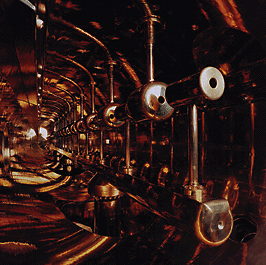Two New Superheavy Chemical Elements
Dec. 2, 2011
The names flerovium and livermorium have been proposed for two recently discovered chemical elements, according to an announcement by the International Union of Pure and Applied Chemistry (IUPAC). A chemical element is a substance with only one kind of atom. IUPAC is the recognized authority for naming chemical elements. The two elements were officially recognized in June. IUPAC and the International Union of Pure and Applied Physics spent about three years determining if the elements had actually been created. IUPAC will allow the public about six months to voice its opinion of the proposed names before they are made permanent. The addition of flerovium and livermorium increases the total number of recognized elements in the periodic table to 114.
Flerovium (atomic symbol, Fl), previously known as element 114, was named in honor of the Russian scientist Georgi N. Flerov, who founded the Joint Institute for Nuclear Research (JINR) in Dubna, Russia. Livermorium (atomic symbol, Lv), previously known as element 116, was named in honor of the Lawrence Livermore National Laboratory in Livermore, California. Both elements were discovered in collaborations between the JINR and Livermore.

A particle accelerator can be used to create chemical elements that do not occur naturally on the earth. GSI
Both flerovium and livermorium are superheavy artificial elements–chemical elements made in a laboratory by smashing atoms of two lighter elements together in a particle accelerator in the hope that they will combine into one heavier atom. Plutonium is the heaviest naturally occurring chemical element. Most artificial elements exist for only a fraction of a second before breaking down into lighter elements once again. Many scientists believe that there may be other superheavy elements that do not break down so quickly but remain stable for a longer period. Such elements are believed to occupy a so-called “island of stability” long sought by chemists.
Additional World Book articles:


